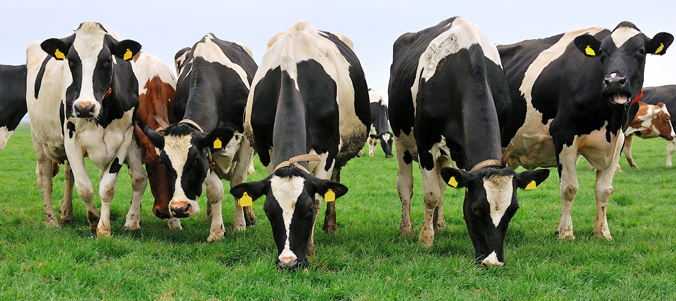Badger persecution may perpetuate bTB hotspots
Published: 17 August 2015
A research study led by the Institute has found that low-level persecution of badger setts may perpetuate bovine TB hotspots. The research, in collaboration with Queen’s University Belfast (QUB) and the Agri-Food and Biosciences Institute (AFBI), is the first study to highlight the potential importance of badger population disturbance, other than officially sanctioned Government culling, in sustaining the bTB epidemic.

Related news
- Prof Rowland Kao: researcher profile
- Link to research paper in Scientific Reports
- Coverage in The Herald: Evidence illegal persecution of badgers by farmers spreads TB amongst cattle
Press release
The debate over the role of badgers in spreading bovine tuberculosis (bTB), and what to do about it, continues to rage in the UK.
Meanwhile, others have taken matters into their own hands and attempted to deal with the perceived badger threat themselves, but a new study has found low-level persecution does not help and may actually make the situation worse.
Bovine Tuberculosis or bTB has proven difficult to control and eradicate in cattle, costing the UK Government more than £100m per annum in testing, slaughter and compensation.
Although badgers are an acknowledged contributor to the persistence and spread of bTB in British and Irish cattle, culling trials in the UK and Ireland have failed to show definitive benefits.
In England, the randomised badger culling trial or RBCT showed that, while intensive pro-active culling was associated with a decrease in cattle bTB inside cull areas, it also prompted an increase in bTB in neighbouring herds.
The proposed reason is the so-called ‘perturbation’ effect, i.e. a disruption in the social structure of the badger population that results in increased spread of bTB to cattle from infected badgers.
In contrast, in the Republic of Ireland, where badgers have been removed over larger, more isolated regions, it has been claimed that culling is effective in disease control.
Now Wellcome Trust funded research led by the University of Glasgow in collaboration with Queen’s University Belfast (QUB) and the Agri-Food and Biosciences Institute (AFBI), have investigated the role low-level illegal persecution of badgers might play in maintaining the disease.
Dr David Wright, who led the study and is now employed at QUB, said: “Whilst the incidence of badger persecution was low, we hypothesised that those taking pre-emptive action against badgers may contribute to maintaining the disease.
“We were interested in investigating the interactions between cattle and disturbed and undisturbed badger populations.”
The researchers found the highest risk of bTB breakdowns in cattle was elevated in areas of high badger social group density and high rates of persecution, potentially representing both responsive persecution of badgers in high cattle risk areas and effects of persecution on cattle bTB risk through potential badger social group disruption.
Badger persecution was more common in areas that had a history of high cattle bTB risk, indicating that responsive persecution is taking place in areas where badgers are perceived to be a threat.
However, there was no evidence that badger persecution reduced risk of bTB breakdown in cattle herds.
Therefore, farmers and stakeholders should be cognisant of the risks incurred by disturbing badger setts, though the reasons for the relationship have not yet been determined.
The most plausible reasons are that either persecuting badgers stimulates spread of the disease via perturbation or farmers are more likely to persecute badgers if their livestock have previously had a bTB breakdown.
These findings should also be considered when designing bTB control programmes that use sub-lethal interventions such as badger vaccination programmes where efforts should be made to minimise disturbance of badger social groups.
Prof. Rowland Kao of the Boyd Orr Centre for Population and Ecosystem Health at the University of Glasgow said: “What we know from the RBCT that intense culling of badgers over a small area can have an overall negative impact on cattle btB; here, we show that badger persecution over a very broad area does not appear to reduce the risk for cattle – further it is illegal, and may even make matters worse.”
This is the first study to highlight the potential importance of badger population disturbance, other than officially sanctioned Government culling, in sustaining the bTB epidemic.
The analysis was based on a previous surveys of badger setts in Northern Ireland led by QUB’s Dr Neil Reid, which revealed that about 5% showed signs of interference, for example, recent digging indicative of badger baiting, entrances being blocked with soil, boulders, branches or other debris inserted directly into holes, dumping of farm debris including bricks on top of setts, agricultural disturbance such as setts being ploughed over or damaged by livestock trampling, development such as the construction of roads or newly built houses and other sources of disturbance such as slurry being pumped into holes.
Farm-level risk factors, including the number of cattle movements, frequency of international cattle imports, previous bTB history and the proximity of neighbouring farms with a bTB history were far more strongly associated with cattle herd breakdowns than measures of badger density or persecution.
The study supports previous work that suggests control could be improved further by increased frequency and accuracy of cattle testing, development of better tests and improved farm biosecurity.
Media enquiries: stuart.forsyth@glasgow.ac.uk / 0141 330 4831
First published: 17 August 2015

